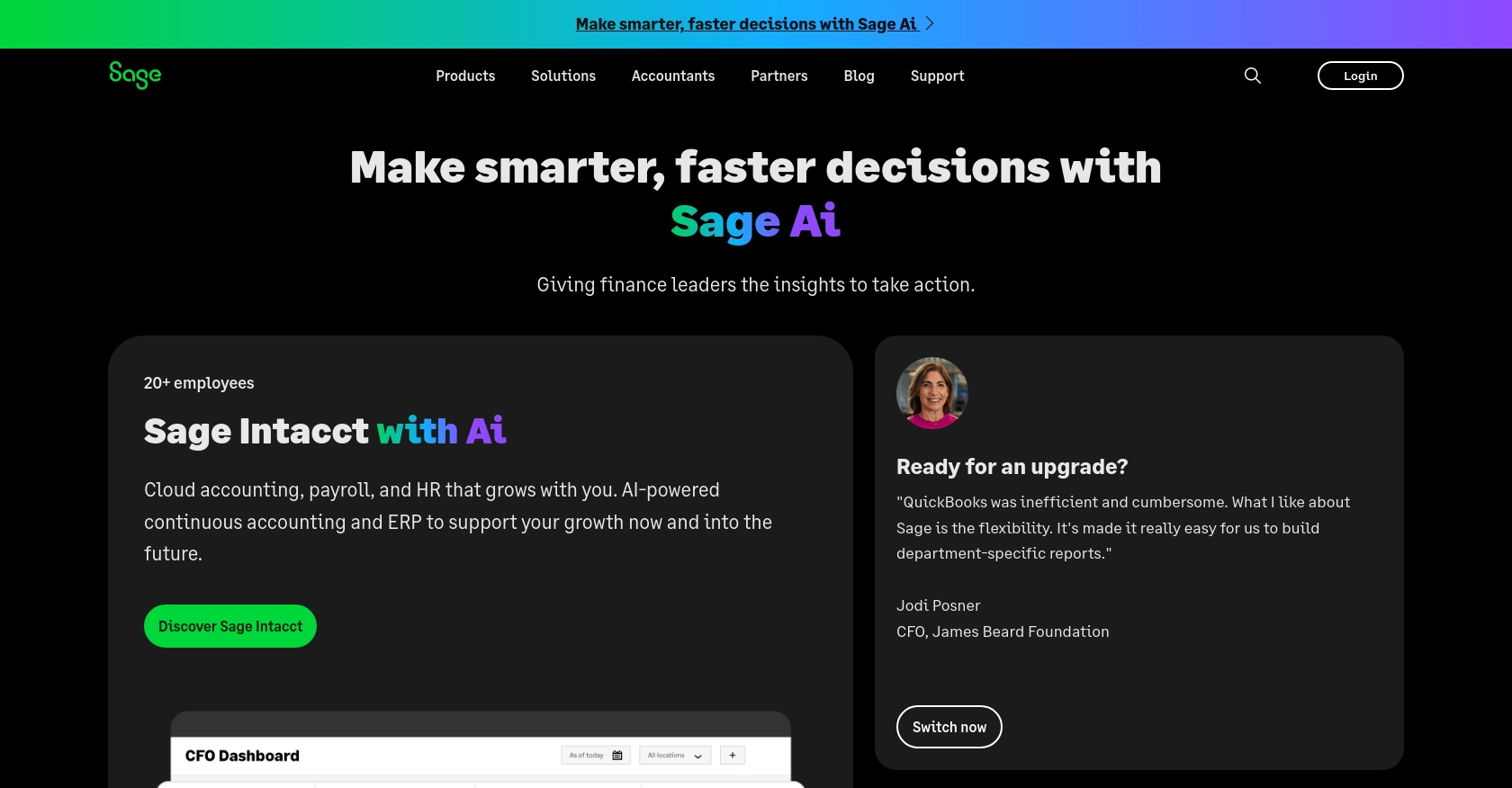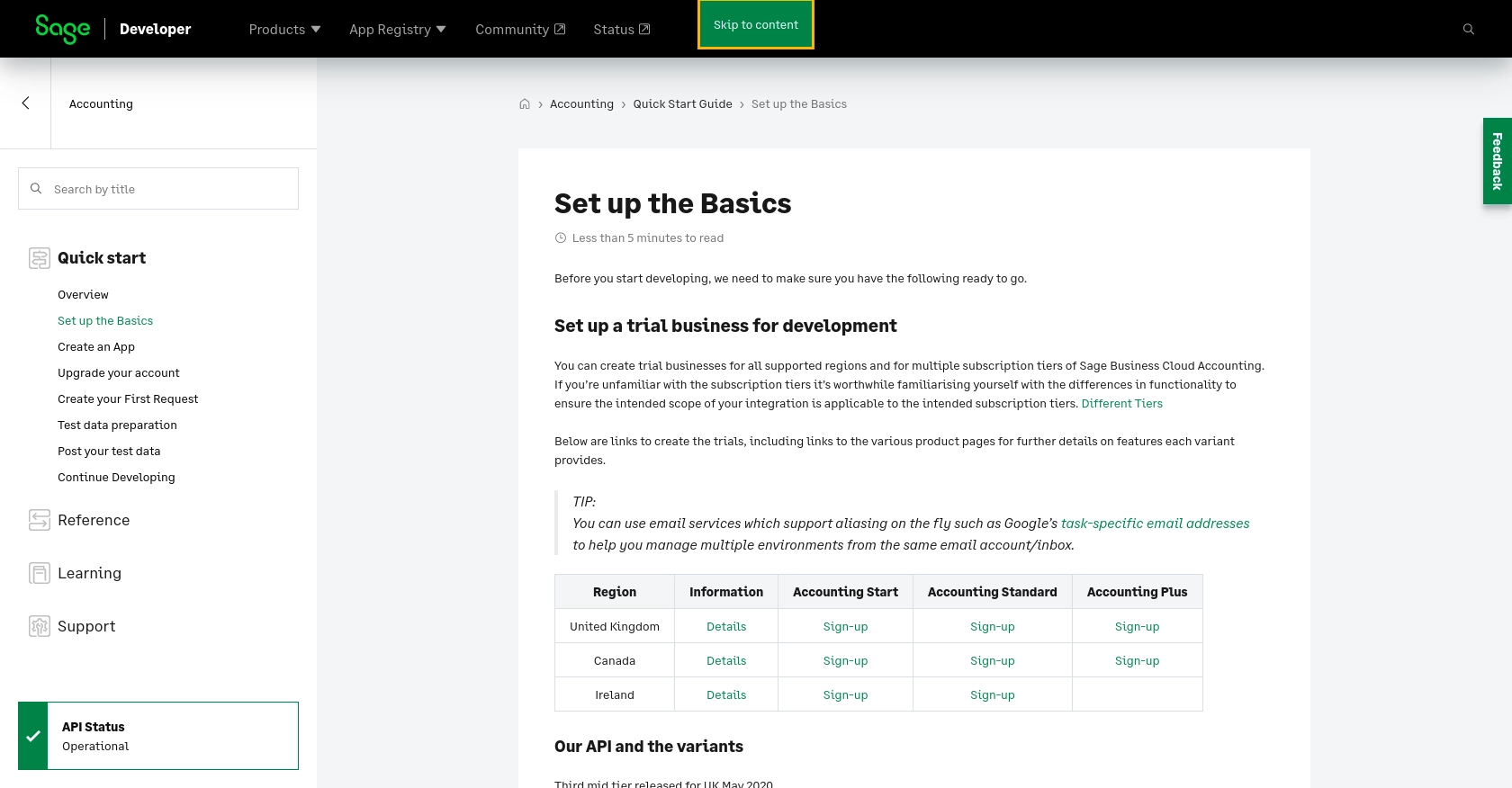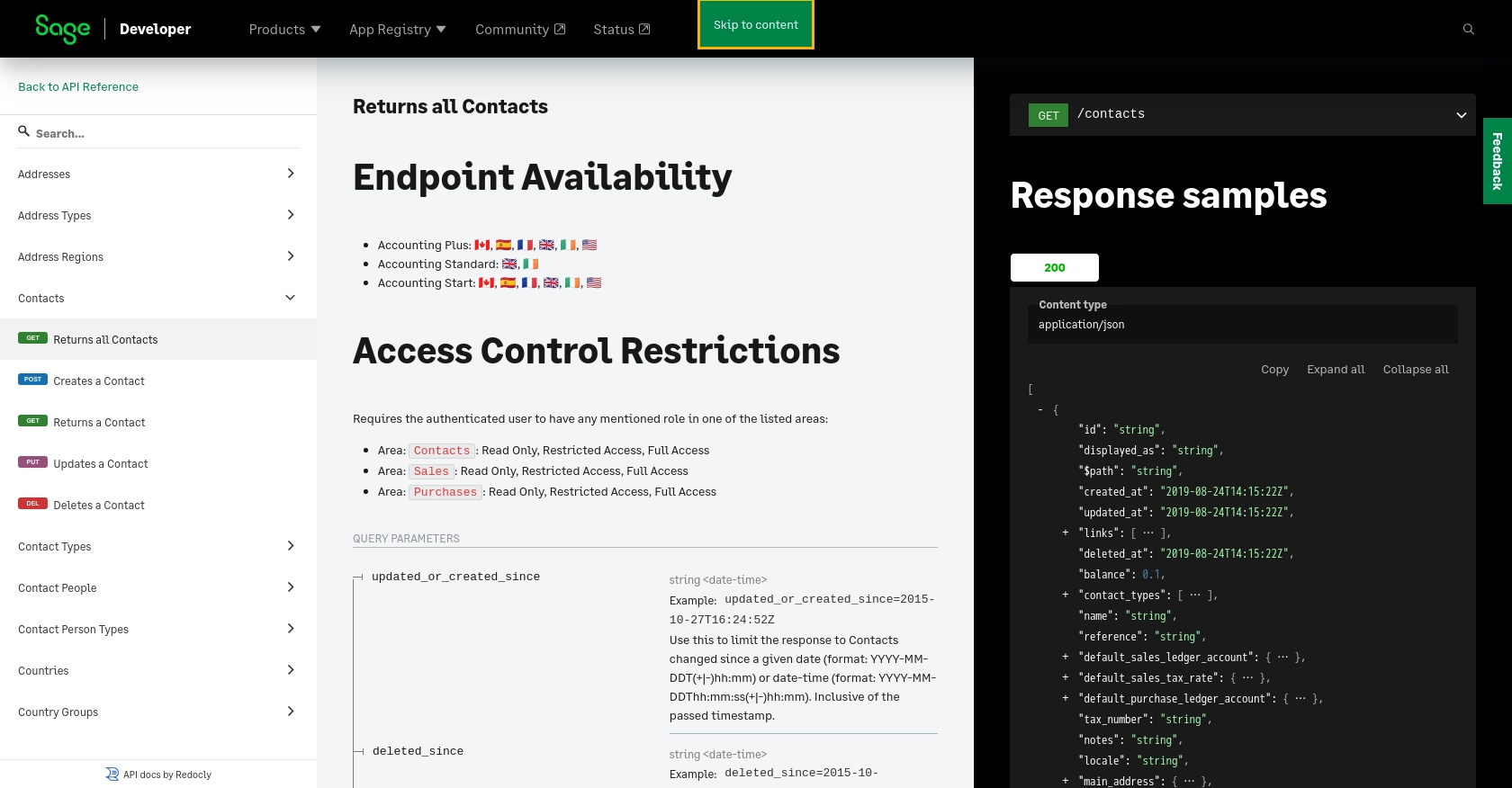Using the Sage Accounting API to Get Customers (with Python examples)

Introduction to Sage Accounting API
Sage Accounting is a robust cloud-based accounting solution tailored for small to medium-sized businesses. It offers a comprehensive suite of tools to manage finances, including invoicing, cash flow, and tax compliance, all within a user-friendly interface.
Integrating with the Sage Accounting API allows developers to streamline financial operations by automating tasks such as retrieving customer data. For example, a developer might use the Sage Accounting API to fetch customer details and integrate them into a CRM system, enhancing customer relationship management and improving business efficiency.
Setting Up Your Sage Accounting Test/Sandbox Account
Before you can start integrating with the Sage Accounting API, you'll need to set up a test or sandbox account. This allows you to safely experiment with the API without affecting live data. Follow these steps to get started:
Create a Sage Developer Account
To begin, you'll need a Sage Developer account. This account will enable you to register and manage your applications, as well as obtain the necessary client credentials.
- Visit the Sage Developer website.
- Sign up using your GitHub account or an email address.
- Follow the guide on creating an app to complete your registration.
Set Up a Trial Business for Development
Next, you'll need to create a trial business account. This will serve as your sandbox environment for testing API interactions.
- Choose the appropriate region and subscription tier for your trial business. Sage offers different tiers such as Accounting Start, Accounting Standard, and Accounting Plus.
- Sign up for a trial business account by following the links provided on the Sage Developer page.
Create a Sage Accounting App
With your developer account and trial business set up, you can now create an app to obtain your OAuth credentials.
- Log in to your Sage Developer account.
- Navigate to the "Create App" section.
- Enter a name and callback URL for your app. You can find more details in the app creation guide.
- Save your app to generate a Client ID and Client Secret.
Upgrade to a Developer Account
To fully utilize the API, you may need to upgrade your trial account to a developer account, which provides extended access for testing.
- Submit a request to upgrade your account by providing your app name, Client ID, and region.
- Wait for confirmation from Sage, which typically takes 3-5 working days. More details can be found here.
Once you have completed these steps, you will be ready to authenticate and interact with the Sage Accounting API using your sandbox account.

sbb-itb-96038d7
Making API Calls to Retrieve Customers from Sage Accounting Using Python
To interact with the Sage Accounting API and retrieve customer data, you'll need to set up your Python environment and make authenticated requests. This section will guide you through the process, ensuring you have the necessary tools and code to successfully fetch customer information.
Setting Up Your Python Environment for Sage Accounting API
Before making API calls, ensure you have Python installed on your machine. This tutorial uses Python 3.11.1. Additionally, you'll need the requests library to handle HTTP requests.
- Install Python 3.11.1 if you haven't already.
- Use pip to install the requests library by running the following command:
pip install requestsWriting Python Code to Fetch Customers from Sage Accounting API
With your environment ready, you can now write the Python code to interact with the Sage Accounting API. The following example demonstrates how to retrieve customer data:
import requests
# Define the API endpoint and headers
endpoint = "https://api.sage.com/accounting/v3.1/contacts"
headers = {
"Authorization": "Bearer Your_Access_Token",
"Content-Type": "application/json"
}
# Make a GET request to the API
response = requests.get(endpoint, headers=headers)
# Check if the request was successful
if response.status_code == 200:
customers = response.json()
for customer in customers['contacts']:
print(f"Customer Name: {customer['contact_name']}, Email: {customer['email']}")
else:
print(f"Failed to retrieve customers: {response.status_code} - {response.text}")
Replace Your_Access_Token with the token obtained from your Sage Developer account.
Verifying Successful API Requests in Sage Accounting Sandbox
After running the code, you should see a list of customers printed in your console. To verify the request's success, cross-check the data with your Sage Accounting sandbox account. If the data matches, your integration is working correctly.
Handling Errors and Understanding Sage Accounting API Error Codes
When making API calls, it's crucial to handle potential errors. The Sage Accounting API may return various status codes indicating the request's outcome. Here are some common error codes:
- 400 Bad Request: The request was malformed. Check your request syntax.
- 401 Unauthorized: Authentication failed. Verify your access token.
- 404 Not Found: The requested resource doesn't exist. Check the endpoint URL.
- 500 Internal Server Error: An error occurred on the server. Try again later.
For more detailed information on error handling, refer to the Sage Accounting API documentation.

Conclusion and Best Practices for Using Sage Accounting API with Python
Integrating with the Sage Accounting API using Python can significantly enhance your business operations by automating customer data retrieval and management. By following the steps outlined in this guide, you can efficiently connect to the Sage Accounting platform and leverage its capabilities to improve your financial workflows.
Best Practices for Secure and Efficient API Integration
- Securely Store Credentials: Always store your Client ID, Client Secret, and access tokens securely. Consider using environment variables or secure vaults to protect sensitive information.
- Handle Rate Limiting: Be mindful of API rate limits to avoid service disruptions. Implement retry logic with exponential backoff to handle rate limit responses gracefully.
- Standardize Data Fields: Ensure that data fields retrieved from the API are standardized and transformed as needed to fit your application's requirements.
- Monitor API Usage: Regularly monitor your API usage and performance to identify any potential issues or areas for optimization.
Streamline Integration Development with Endgrate
While integrating with Sage Accounting API can be straightforward, managing multiple integrations can become complex. Endgrate offers a unified API solution that simplifies integration development across various platforms, including Sage Accounting. By using Endgrate, you can:
- Save time and resources by outsourcing integration development and focusing on your core product.
- Build once for each use case instead of multiple times for different integrations.
- Provide an intuitive integration experience for your customers, enhancing their satisfaction and engagement.
Explore how Endgrate can transform your integration strategy by visiting Endgrate's website and discover the benefits of a streamlined integration process.
Read More
- https://endgrate.com/provider/sage
- https://developer.sage.com/accounting/quick-start/set-up-the-basics/
- https://developer.sage.com/accounting/quick-start/create-an-app/
- https://developer.sage.com/accounting/quick-start/upgrade-your-account/
- https://developer.sage.com/accounting/reference/contacts/#tag/Contacts/operation/getContacts
Ready to get started?
